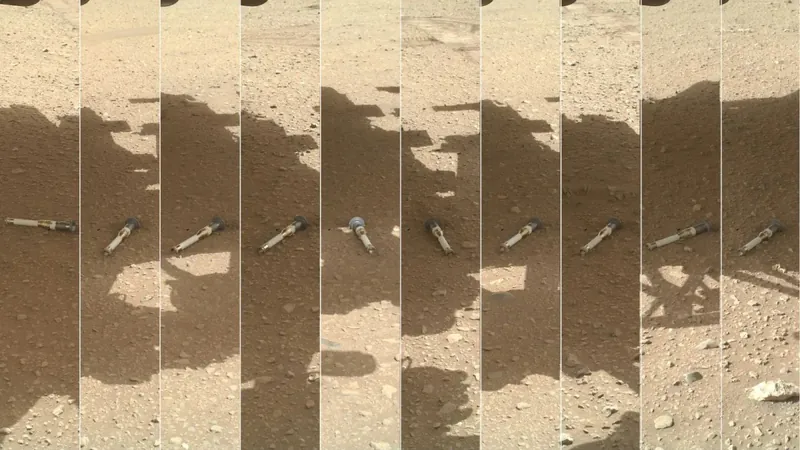
NASA Set to Decide on Mars Sample Return Mission by Late 2026: What's at Stake?
2025-01-08
Author: Arjun
NASA's Mars Sample Return Mission Overview
In a groundbreaking exploration of Mars, NASA is gearing up to make a pivotal decision on how to bring soil samples back from the Red Planet, with an announcement anticipated in late 2026. The excitement surrounding the Mars Sample Return program has been tempered by the challenges it faces, especially after an independent review flagged the mission's costs could skyrocket to between $8 billion and $11 billion, well beyond the original budget.
Landing Strategies Under Consideration
NASA will explore two primary landing strategies for the mission. The first method under consideration is the "sky crane" technique, which employs a sophisticated landing system that has successfully put both the Curiosity and Perseverance rovers on Mars. In this scenario, a vehicle would approach Mars using parachutes, then retrieve samples collected by Perseverance through a cable mechanism before ascending back to orbit.
The second method takes a collaborative approach, involving commercial space giants such as SpaceX, Blue Origin, and Lockheed Martin. These companies have been invited to propose innovative solutions for tackling the return of Martian samples to Earth. Regardless of the chosen path, NASA aims to reduce the size of the Mars Ascent Vehicle, the lightweight rocket designed to transport samples from the Martian surface to orbit, ensuring that it can accommodate up to 30 sample tubes.
Challenges and Budget Constraints
Adding to the complexity, the Jet Propulsion Laboratory (JPL) faced significant workforce reductions last year, laying off 530 employees and cutting 100 contract positions primarily due to budget constraints related to this ambitious mission. Despite NASA’s request for $950 million to spearhead the program, only $300 million was allocated, prompting worries about the feasibility of meeting the projected 2040 sample return timeline.
Implications of the Mission's Delay
The stakes are high, as an extended timeline may lead to missed opportunities in scientific discovery and potentially put future missions at risk. Notably, the U.S. government has described any delays beyond 2040 as "unacceptable," emphasizing the urgency of NASA's decision-making process.
Conclusion and Future Outlook
As NASA meticulously examines its options over the next couple of years, the world will be watching closely. The implications of this mission are profound, promising to enhance our understanding of Mars and unravel the mysteries of its geological history. Will NASA's innovative strategies secure the return of Martian soil samples, or will budgetary hurdles lead to a halt in this historic journey? Stay tuned for updates as this thrilling space saga unfolds!
 Brasil (PT)
Brasil (PT)
 Canada (EN)
Canada (EN)
 Chile (ES)
Chile (ES)
 Česko (CS)
Česko (CS)
 대한민국 (KO)
대한민국 (KO)
 España (ES)
España (ES)
 France (FR)
France (FR)
 Hong Kong (EN)
Hong Kong (EN)
 Italia (IT)
Italia (IT)
 日本 (JA)
日本 (JA)
 Magyarország (HU)
Magyarország (HU)
 Norge (NO)
Norge (NO)
 Polska (PL)
Polska (PL)
 Schweiz (DE)
Schweiz (DE)
 Singapore (EN)
Singapore (EN)
 Sverige (SV)
Sverige (SV)
 Suomi (FI)
Suomi (FI)
 Türkiye (TR)
Türkiye (TR)
 الإمارات العربية المتحدة (AR)
الإمارات العربية المتحدة (AR)